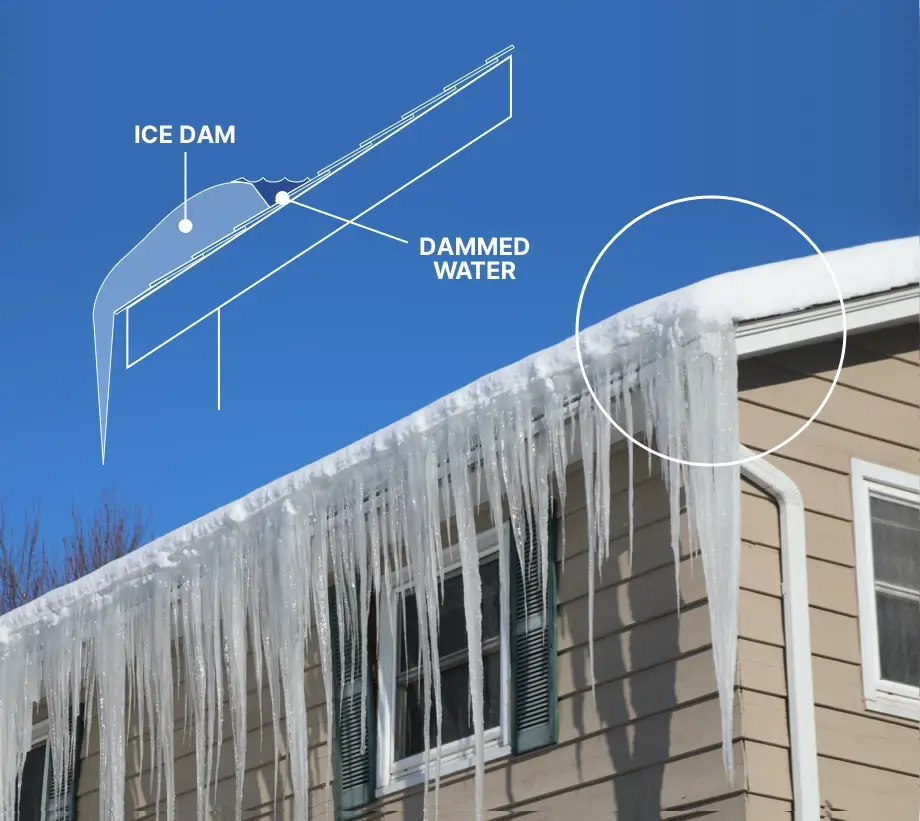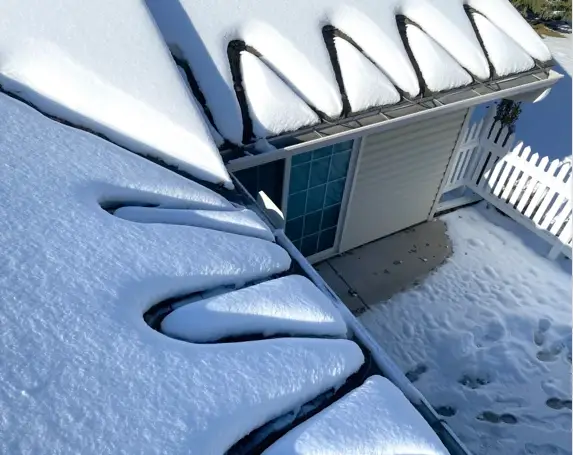When conditions occur that create an increase in temperature that melts the snow on your roof, the melted snow may re-freeze at another location where the warmth is less prevalent. This re-freeze can cause a shelf of ice that blocks melting water from escaping the area, like a dam.
When water is dammed and can not escape an area of your roof, it starts to pool. Pooling water will eventually seep through your roofing system, which is designed to protect your home against water running off your roof –not standing water that has depth.
Once water has seeped through your roof, it can cause a whole host of problems on many other systems of your home’s construction. Click below to learn about a few typical problems ice dams cause.


The 70º-90º warmth of the heat tape prevents ice from forming a continuous shelf, making channels for drainage through the snow and ice. By creating and maintaining these drainage channels at several spots in problematic areas, heat tape will prevent an ice dam from forming. These channels prevent the build up of water by allowing it to escape the surface of the roof, go through the gutter and down the downspout.
When water is allowed to escape the roof, the existence of built-up snow –and even ice– is benign.
The phenomenon of ice dams always involves two things:
The most common source of heat is the escaping warmth from inside the home, warming the attic and subsequently the roof. Factors such as ventilation, insulation, solar orientation, tree coverage, home architecture, snow cover, home owner lifestyle and of course weather conditions all interact to determine ice dam activity on every home.
Homes that have a lot of heat escape can melt roof snow even in very low outside temperatures. Then, when the melted snow comes to an area of the roof that is not affected by the escape of heat, it starts forming ice.
The overhanging edge of your roof called an “eave” is the most common location for melted roof snow to refreeze and start forming an ice dam. Gutters can play a part in this refreeze but are typically not the underlining cause of forming ice dams.
Other areas that can commonly cause ice dams are:
Find heat tape products & accessories for ice dam prevention and pipe freeze protection.
We may be able to help connect you with a Radiant Solutions Heat Tape installer in your area.
And Product Dimensions
Understand the problems that our products solve and the advantage Radiant Solutions has over our competitors.
Demand is high across the U.S. & installers are needed!
128-Bit encrypted connection
We’re here to help. We are a 35 year old, family-owned, American company who loves to hear from our customers.